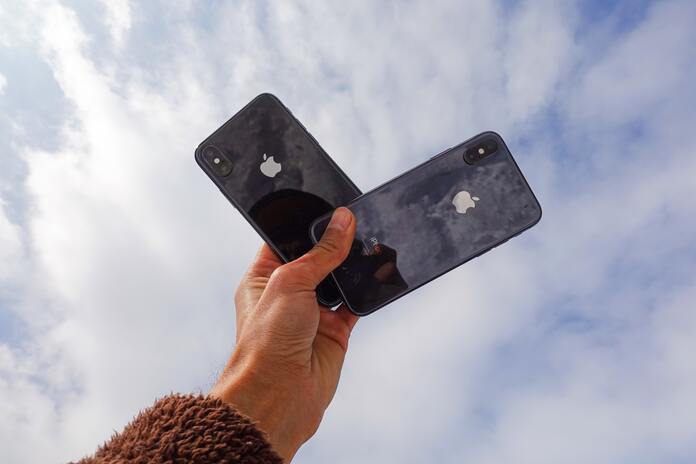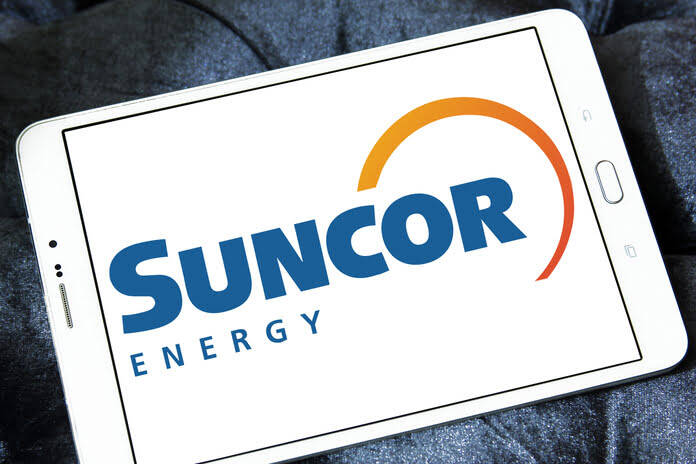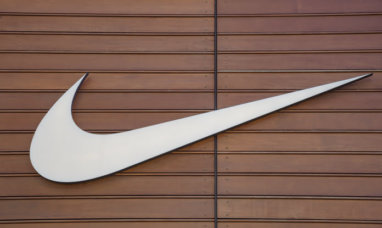Apple Stock (NASDAQ:AAPL)
Due to money moving into money-market funds with higher yields over the past year, banks have lost close to $1 trillion in deposits. Apple is one business taking some of the money. A savings account with a yield of 4.15%, which is ten times the national average for banks, was just introduced by the iPhone manufacturer. In the first week of May, Apple CEO Tim Cook told analysts, “We are very pleased with the initial response.”
Apple (NASDAQ:AAPL) doesn’t want to be a bank, but it is expanding its financial services offerings in an effort to increase revenue and keep its more than one billion iPhone users enthralled with the Apple ecosystem. With its Apple Pay service, the business is diversifying into the payments sector. With Goldman Sachs Group (NYSE:GS), its partner for savings accounts, it has built a credit card business. Now, it is forging ahead in the buy now, pay later space, competing with businesses like Affirm (NASDAQ:AFRM), Block (NYSE:SQ), and PayPal Holdings (NASDAQ:PYPL).
All of this is unlikely to have any financial impact on Apple, which is predicted to earn $96 billion in net income and $391 billion in revenue this year. However, services, such as cloud, music, and video, are increasingly important revenue generators, making up 20% of total sales. Apple keeps 30% of app sales as well as a cut of the revenue from games, music, and videos. By expanding its payment options, Apple adds a new revenue stream and gives customers one more incentive to hold onto their iPhones until the next upgrade cycle.
Long-term, if Apple is successful in creating a comprehensive digital wallet, it could become another killer app embedded in the two billion devices the company has already sold, keeping customers from purchasing additional hardware, software, and other services due to how convenient it is to have everything in one place.
None of this is encouraging for PayPal, Block, and other fintech competitors like them. Everyone in the fintech industry considers Apple to be a threat, according to one analyst who spoke to Barron on condition of anonymity due to investments in the sector.
The business has been actively pursuing fintech for almost ten years. In addition to peer-to-peer payments in 2016 and a Goldman-branded credit card in 2019, it gradually added features after launching Apple Pay, its contactless mobile payment service, in 2014. In 2016, only 10% of iPhones had Apple Pay enabled. However, according to data from Deepwater Asset Management, the pandemic era’s online shopping increased adoption to 55% in 2020 and roughly 78% today.
According to Lisa Ellis, senior fintech analyst at MoffettNathanson, “Apple’s ‘familiarity factor’ has long been coming.” Her channel checks reveal that usage of Apple Pay has increased over the past 18 months, with a “notable shift” in the last six months.
This year, Apple added two significant features to its digital wallet. It entered into a direct competitive relationship with Affirm, Afterpay (owned by Block), PayPal, and Klarna when it introduced Apple Pay Later, a BNPL service, in March. Due to its ability to combine layaway organizational principles with the convenience of a credit card, BNPL has grown in popularity over the past few years. Instead of charging a purchase to their credit card, consumers typically divide the payment into four equal, 0%-interest installments over the course of two months.
The Goldman-operated savings accounts provide customers with a high-yield incentive to store cash in Apple Wallet, which serves as a hub for payments and credit cards, including the company’s own branded card. Rewards acquired using its card are automatically transferred to a savings account with a maximum balance of $250,000.
Investors seem to be losing interest in payment stock due to Apple’s fintech ambitions. The value of the shares of PayPal, Block, and Affirm has fallen by over 75% from their 2021 highs. Investors are now giving earnings and growth lower multiples. According to FactSet, PayPal trades at 11.6 times the estimated 12-month earnings, which is less than one-third of its five-year average of 33 times. Block attempts 28 times, which is fewer than the average of 98. Despite not being profitable, Affirm trades at 2.4 times sales, which is less than the industry average of 17 times.
Given that Apple doesn’t compete in some key markets, some analysts see discounts in the stocks of payment companies. For instance, PayPal seems to have found success with its Braintree business, a “stack” of processing services that enable businesses to accept credit cards, PayPal, and PayPal credit through a single platform. According to Evercore ISI analyst Amit Daryanani, PayPal has some other institutional advantages, such as a higher acceptance rate among sizable online retailers than Apple Pay.
Block’s collection of Square apps for business owners includes tools for managing sales, invoices, payroll, and subscriptions. Block is also transforming its Cash app into a comprehensive digital wallet. Block, which was founded by Jack Dorsey, is another supporter of Bitcoin and is developing cryptocurrency and blockchain services, which Apple does not.
Not just as a result of Apple’s pressure, Affirm appears more exposed. You can use BNPL to pay off individual charges on your JPMorgan Chase or American Express credit card. BNPL is now a commodity offered by big banks and fintech. Affirm claims that its customer and merchant base is expanding, and it now has 16 million active users, up from 12.7 million a year ago. Analysts, however, are downgrading estimates, price targets, and ratings for the stock as a result of the growing pressure.
While declining to comment, Affirm cited a statement it made after Apple Pay Later was introduced, in which it claimed to be “well-positioned to win.”
Apple isn’t a fintech juggernaut yet. Venmo, PayPal, and Square are still used by far more people for payments and merchant services, respectively. Savings accounts and the BNPL service are just getting started.
Although Apple has a sizable financial arsenal at its disposal, including $56 billion in cash and cash equivalents on its balance sheet, it is playing a long game. It also has a significant advantage over competing payment companies in that it has complete control over both the hardware and software through its iOS-based devices. Similar payment services are being developed for Android devices running the Google operating system, but none are as fully integrated as Apple.
According to the fintech analyst who has investments in the sector and spoke to Barron, the pressure will force payment companies to engage in more “blocking and tackling” to counter the threat of Apple. That might be expensive. Apple spent $26 billion on R&D in the fiscal year 2022, compared to PayPal’s $1.7 billion. While still having plenty of funds for things like virtual reality headsets, video content, and new features for the Apple Watch, iPhones, iPads, and Macs, Apple could significantly outspend PayPal.
Apple has the best-selling smartphone as well as a sizable cash reserve. It is the leading disruptor as a result.
Featured Image: Pexels @ Rubaitul Azad















